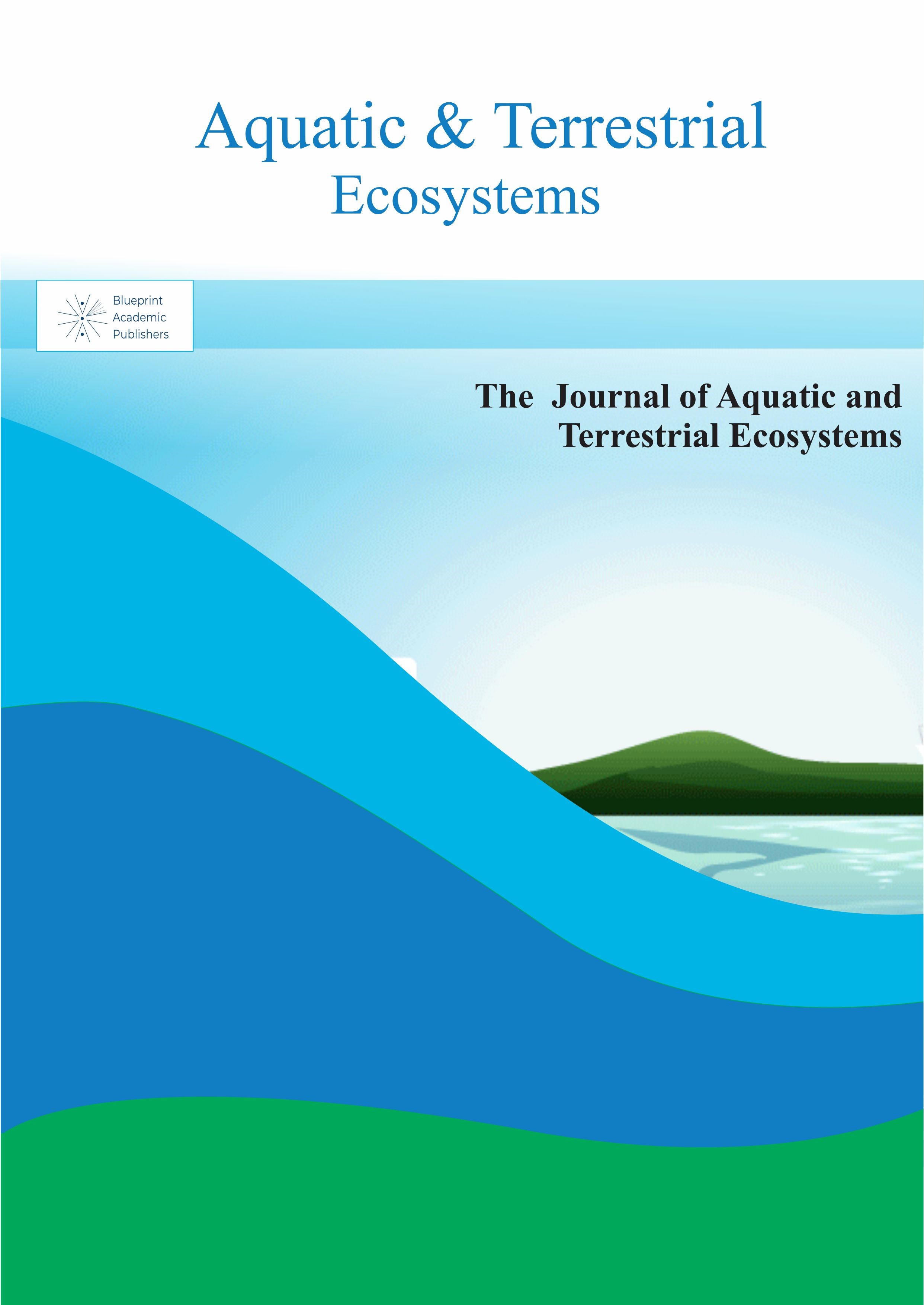Assessment of Land Cover Changes in the Micro-Catchments of the Nyando River Basin within the Lake Victoria Basin, Kenya
Main Article Content
Keywords
Land Cover Change, Nyando River Basin, Micro-catchments, Satellite Imagery, Land Degradation, Lake Victoria Basin
Abstract
The Nyando and Awach river catchments serve as vital headwaters draining into the Winam Gulf of Lake Victoria, an ecosystem increasingly threatened by sediment and nutrient loading. Despite its crucial role in regional hydrological stability, this region has undergone immense, largely unregulated anthropogenic pressure, leading to suspected widespread environmental degradation. The lack of long-term spatial data on the nature and level of land cover conversion constitutes a major barrier to formulating effective conservation strategies. To address this gap, this study quantified the extent, magnitude, and spatial dynamics of Land Cover Change (LCC) to assess the actual scale of environmental degradation. LCC was quantified through a time-series analysis of LANDSAT TM/ETM satellite imagery (1995, 2000, 2006, and 2012). A comparative micro-catchment classification (Uninterfered, Interfered, and Intervened sites) provided the environmental sampling framework. Images were processed using a Hybrid Supervised Classification approach to delineate four key thematic classes: Vegetation, Built-up Land, Water, and Open Land. Change detection matrices were then generated to calculate the absolute change, rate of change and conversion pathways. The results revealed significant vegetation decline in the Nyando catchment, characterized by a net loss of 54.2% of vegetative cover over the 17-year period. This loss corresponded with a marked increase in Open Land (≈41.5%) and Built-up Area (≈14.3%). The dominant conversion pathway, accounting for approximately 40.9% of all change, was the direct transformation of Vegetation to Open Land, signifying widespread, non-conservative agricultural expansion in the highlands. However, the Awach catchments registered comparatively lower net change, largely due to the replacement of indigenous forests with commercial plantations, which concealed ongoing ecological degradation. The significant expansion of exposed Open Land critically increases the risk of soil erosion and intensifies runoff, posing a serious threat to the hydrological stability of the basin and contributing to sediment loading in Lake Victoria. Urgent policy interventions focused on mandating soil conservation practices, regulating settlement expansion and immediate rehabilitation of riparian zones are necessary to reverse these detrimental trends and ensure the sustainable use of basin resources.
References
Gathenya, M., Mwangi, H., Coe, R., & Sang, J. (2011). Climate-and land use-induced risks to watershed services in the Nyando River Basin, Kenya. Experimental Agriculture, 47(2), 339-356. https://www.cambridge.org/core/journals/experimental-agriculture/article/abs/climate-and-land-useinduced-risks-to-watershed-services-in-the-nyando-river-basin-kenya/C48B3AD49EF2D1B4B4D615731EE35E73
Kenge, J. G. (2009). Participatory watershed management to decrease land degradation and sediment transport in Kagera and Nyando catchments of Lake Victoria basin.
Kumar, L., & Koech, R. (2020). Impact of land use/cover changes on soil erosion in western Kenya. Sustainability, 12(22), 9740. https://doi.org/10.3390/su12229740
Kundu, P. M., & Olang, L. O. (2011). The impact of land use change on runoff and peak flood discharges for the Nyando River in Lake Victoria drainage basin, Kenya. Proceedings / Environmental Science.
https://www.witpress.com/Secure/elibrary/papers/WS11/WS11008FU1.pdf (WIT Press)
Masese, F. O., Achieng’, A. O., Raburu, P. O., Lawrence, T., Ives, J. T., Nyamweya, C., & Kaunda‐Arara, B. (2020). Distribution patterns and diversity of riverine fishes of the Lake Victoria Basin, Kenya. International Review of Hydrobiology, 105(5-6), 171-184. https://doi.org/10.1002/iroh.202002039
Mibey, M. J. (2022). Developing a Water Allocation Planning Model for a Kenyan Sub-catchment: a Case Study of Awach Tende Sub-catchment (Doctoral dissertation, University of Nairobi). https://erepository.uonbi.ac.ke/handle/11295/161845
Miruka, J. B., Getabu, A., Sitoki, L., James, O., Mwamburi, J., George, O., ... & Odoli, C. (2021). Water quality, phytoplankton composition and microcystin concentrations in Kisumu Bay (Kenya) of Lake Victoria after a prolonged water hyacinth infestation period. Lakes & Reservoirs: Research & Management, 26(4), e12380.
Muthoka, M., Ogello, E. O., Outa, N. O., Ouko, K. O., Obiero, K. O., Mboya, J. B., & Mukaburu, B. O. (2024). Threats to aquatic biodiversity and possible management strategies in Lake Victoria. Aquaculture, Fish and Fisheries, 4(1), e143. https://doi.org/10.1002/aff2.143
Muyodi, F. J., Bugenyi, F. W., & Hecky, R. E. (2010). Experiences and lessons learned from interventions in the Lake Victoria Basin: the Lake Victoria environmental management project. Lakes & Reservoirs: Research & Management, 15(2), 77-88. https://doi.org/10.1111/j.1440-1770.2010.00425.x
Ngodhe, S. O. (2021). A review on Causes of Ecological change along Lake Victoria basin, Kenya. Scientific Reports in Life Sciences, 2(4), 30-39. https://scientific-reports.com/index.php/srls/article/view/32
Ocholla, P. O. (2010). The Impact of Flooding Characteristics on Cotton Cultivation in Lower Kano Plain in Nyando District, Western Kenya (Doctoral dissertation). https://uzspace.unizulu.ac.za/items/d9db716d-4d61-4ba5-b660-8e07ff6179e1
Odaro, D. O. (2023). Integrated Environmental Planning Of Wetland Ecosystems For Sustainability: The Case Of Okana Wetland In The Lower Nyando River Basin, Kenya (Doctoral dissertation, University of Eldoret).
Ogola, J. O., Mogwasi, R., & Olale, K. (2023). Impact of Human Activities on Water Quality in River Kibos-Nyamasaria, Kisumu County: An Inlet River to Lake Victoria in Winam Gulf, Kenya.
Olang, L. O. (2011). Analysis of spatio-temporal land cover changes for the Nyando Basin: implications for hydrology and land management. Environmental Monitoring and Assessment. https://link.springer.com/article/10.1007/s10661-010-1743-6. (SpringerLink)
Omwoyo, A. M., Onwonga, R. N., Wasonga, O. V., & Kinyanjui, M. J. (2024). Spatio-temporal patterns of land use and land cover change in Kibwezi West, Eastern Kenya: 1990–2021 and projections to 2051. Discover Soil, 1(21), 1–16. https://doi.org/10.1007/s44378-024-00021-4
Onganya, D. O. (2023). The economic benefits of Yala wetland resources in the Lake Victoria Basin, threats and management strategies for sustainable development. African Journal of Education, Science and Technology, 7(3), 65-75.
Renaut, R. W., & Owen, R. B. (2023). Lake Victoria. In The Kenya Rift Lakes: Modern and Ancient: Limnology and Limnogeology of Tropical Lakes in a Continental Rift (pp. 527-576). Berlin, Heidelberg: Springer Berlin Heidelberg. https://doi.org/10.1007/978-3-642-25055-2_13

